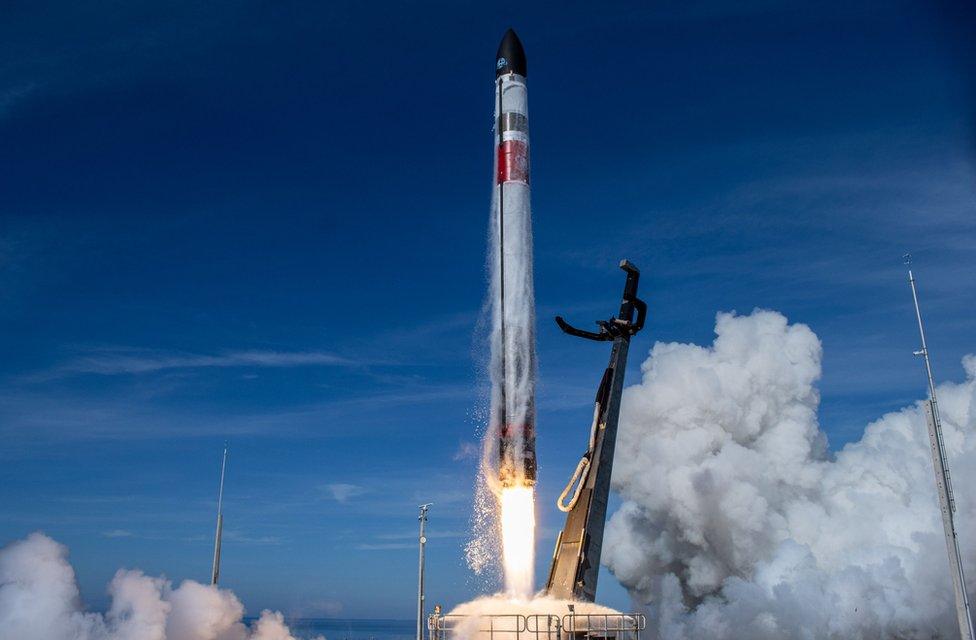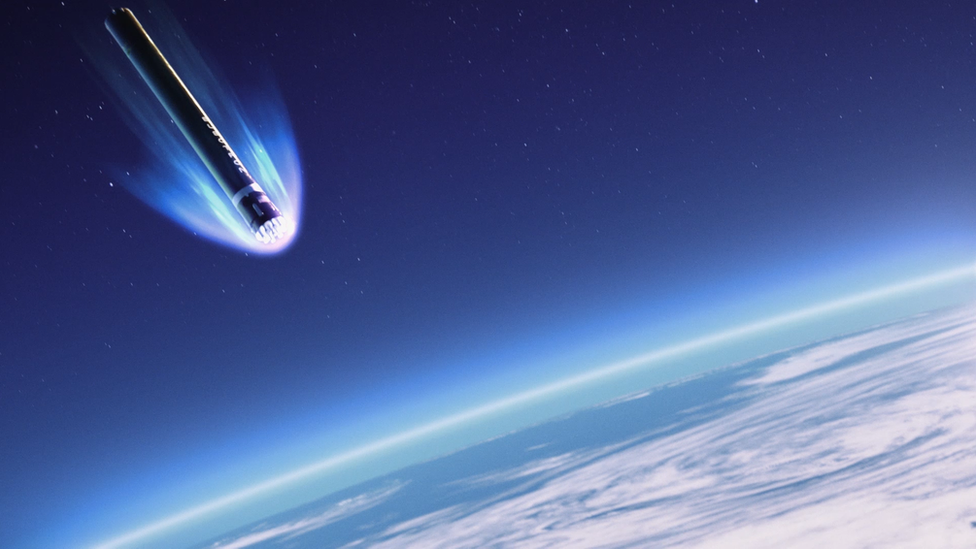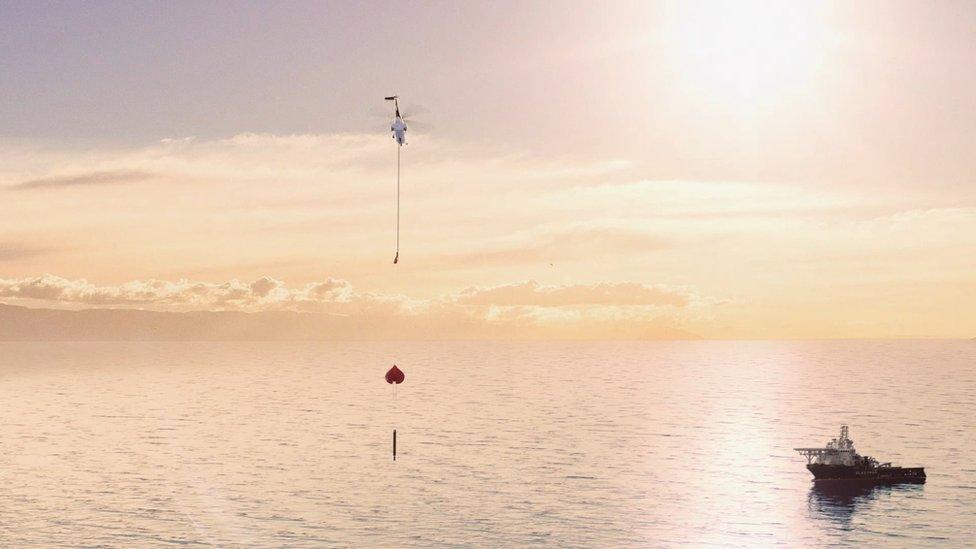Rocket Lab: Helicopter catches returning booster over the Pacific
- Published
Watch highlights from Rocket Lab's latest mission, including the booster capture
The US-New Zealand Rocket Lab company has taken a big step forward in its quest to re-use its launch vehicles by catching one as it fell back to Earth.
A helicopter grabbed the booster in mid-air as it parachuted back towards the Pacific Ocean after a mission to orbit 34 satellites.
The pilots weren't entirely happy with how the rocket stage felt slung beneath them and released it for a splashdown.
Nonetheless, company boss Peter Beck lauded his team's efforts.
"Bringing a rocket back from space and catching it with a helicopter is something of a supersonic ballet," the CEO said.
"A tremendous number of factors have to align and many systems have to work together flawlessly, so I am incredibly proud of the stellar efforts of our recovery team and all of our engineers who made this mission and our first catch a success."
Allow X content?
This article contains content provided by X. We ask for your permission before anything is loaded, as they may be using cookies and other technologies. You may want to read X’s cookie policy, external and privacy policy, external before accepting. To view this content choose ‘accept and continue’.
Mr Beck said the hard parts of rocket recovery had now been proven and he looked forward to his staff perfecting their mid-air technique.
The entrepreneur later published a picture of the rocket stage after it had been picked up by a ship. It was intact and appeared to have coped extremely well with the heat that would have been generated on the descent through the atmosphere.

Rocket Lab's Electron vehicle lifts off on a mission dubbed "There And Back Again"
Today, only one company routinely recovers orbital rocket boosters and reflies them. That's California's SpaceX firm, which propulsively lands its stages back near the launch pad or on a barge out at sea.
Re-using flight-proven boosters should reduce the cost of rocket missions, provided maintenance can be kept to a minimum. SpaceX says very little refurbishment work is required between flights of its Falcon vehicles.
Rocket Lab, external will have to demonstrate similar gains to make the practice worthwhile.
Allow X content?
This article contains content provided by X. We ask for your permission before anything is loaded, as they may be using cookies and other technologies. You may want to read X’s cookie policy, external and privacy policy, external before accepting. To view this content choose ‘accept and continue’.
Rocket Lab launches its two-stage Electron vehicles from New Zealand's Mahia Peninsula.
The first stage does the initial work of getting a mission off Earth, and once its propellants are expended falls back towards the planet.
The second, or upper, stage, completes the task of placing the satellite passengers in orbit with the help of a small kick-stage called Curie. Both the second stage and this Curie kick-stage eventually fall back into the atmosphere and burn up.
The first stage is given thermal protection as it plunges to Earth at speeds of almost 8,300km/h (5,150mph). Drag will take out much of this energy, before parachutes reduce the velocity to a mere 10m/s (22mph) to allow a Sikorsky S-92 to move in for capture.
Ordinarily, the helicopter would transfer the captured stage to land, but in this instance the pilots thought the load characteristics of the stage were sufficiently different to test flights that safety demanded they offload the booster to let it go into the water.
"I would say 99% of everything we needed to achieve today, we achieved; the 1% was the pilots didn't like the feel of it. So they jettisoned (the stage)," Mr Beck told reporters.
"And really, that kind of accounts for the amount of work we've got to do as well. Ninety-nine percent of the work is done, we'll figure out why the pilots didn't like it and go fix that."

Tuesday's mission, dubbed "There And Back Again", left the ground at 10:49 NZST (22:49 GMT, Monday).
Its primary objective was to take a diverse group of 35 spacecraft to orbit, more than 500km (310 miles) above the Earth. These payloads included four mini-satellites for Scottish manufacturer Alba Orbital, and three for E-Space, a new company started by serial space entrepreneur Greg Wyler.

Artwork: The booster is moving at very high speed on re-entry and needs protection from the heat that's generated
Mr Wyler is well known in the space business and has been described as the "godfather of mega-constellations", the giant telecommunications networks now being developed by the likes of SpaceX, OneWeb and Amazon.
Mr Wyler founded OneWeb and before that, O3b, which sought to connect the unconnected (O3b stood for "other three billion", the number of people without an internet connection).
His new venture, E-Space, proposes to loft tens of thousands of satellites. But mindful of the congestion in orbit and the risk of collisions this might cause, the businessman claims his forthcoming constellation would also catch space debris and bring it out of the sky, leading to a net-positive impact on the space environment.

Artwork: How a successful capture should look